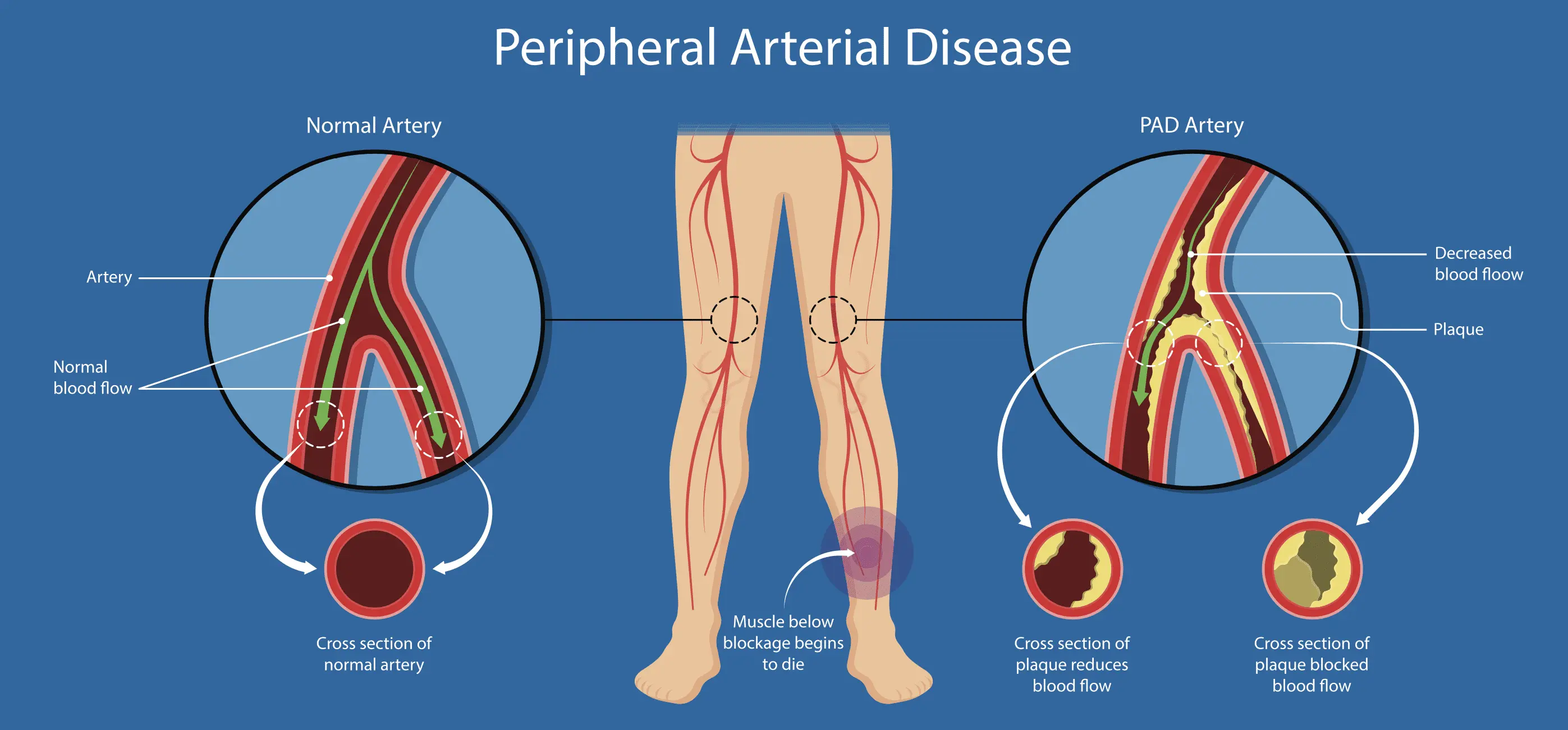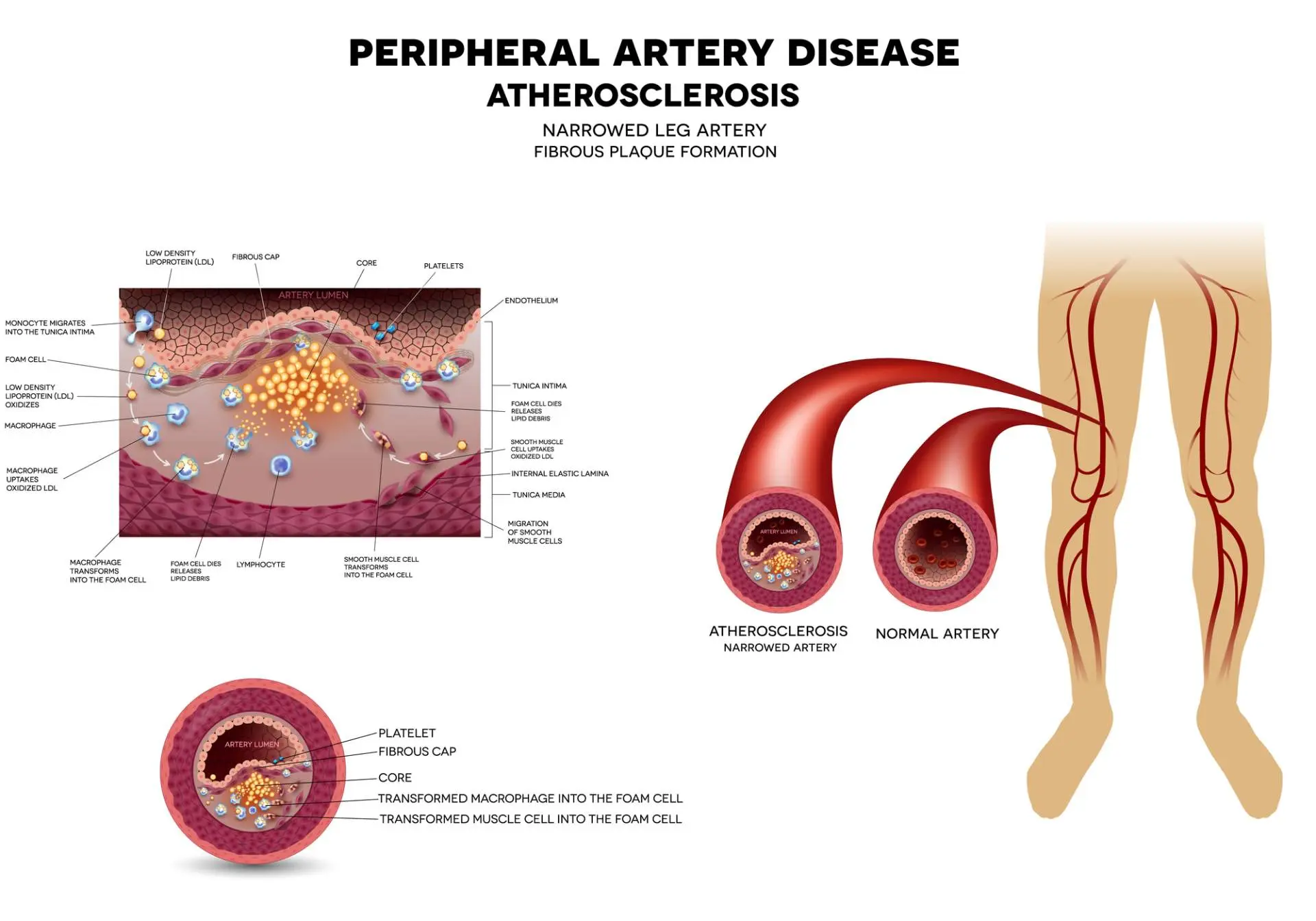Can Peripheral Artery Disease be Cured?
No
Peripheral artery disease is a chronic condition; while treatment can manage symptoms and improve blood flow, it may not be completely curable, and ongoing management is often necessary

What is Peripheral Artery Disease?
Peripheral artery disease (PAD) is a condition where narrowed arteries reduce blood flow to the extremities, leading to symptoms like pain and numbness. Treatment involves lifestyle changes, medications, and, in severe cases, interventions like angioplasty or surgery.

Clinical Aspects

Characteristics
Narrowing or blockage of the arteries, usually in the legs, reducing blood flow to the extremities

Symptoms
Leg pain or cramping during physical activity (intermittent claudication), numbness or weakness, coldness in the extremities

Diagnosis
Clinical evaluation, sometimes imaging

Prognosis
Variable, depends on severity and treatment

Complications
Impaired blood flow, potential for complications
Etiology and Treatment

Causes
Atherosclerosis, diabetes, smoking, high blood pressure, high cholesterol, aging

Treatments
Lifestyle modifications (exercise, smoking cessation), medications (antiplatelets, statins), angioplasty, bypass surgery

Prevention
Lifestyle modifications (exercise, smoking cessation), medications (antiplatelets, statins), angioplasty, bypass surgery
Public Health and Patient Perspectives

Epidemiology
Common, often associated with atherosclerosis

Patient Perspectives
Lifelong management tailored to severity
Please remember that this information is provided for general understanding, and individual cases may vary. Always consult with healthcare professionals for personalized advice and information.
Share: